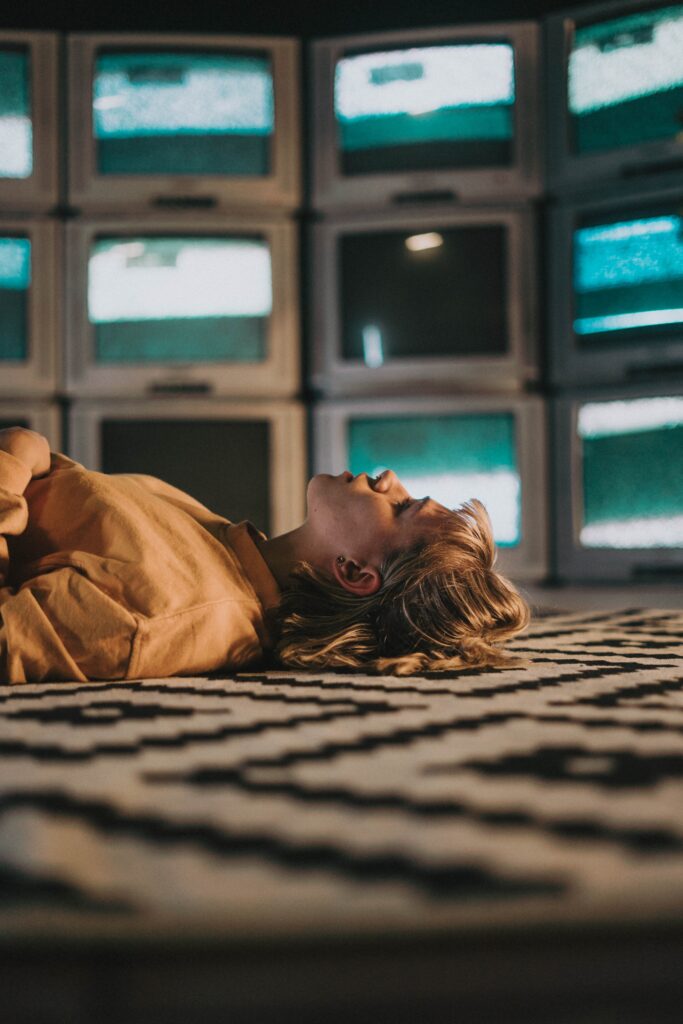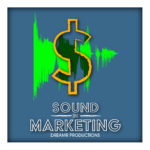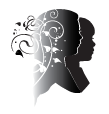“Noisy” Visual Marketing
On Episode 27 and 28 of the Sound In Marketing Podcast, I explored how sound can be an interruption to the “noise” of visual marketing. I interviewed Arafel Buzan and Rachel Lowenstein from Mindshare, a global media and marketing services company created in 1997. These ladies are experts in the space.
Arafel Buzan is the Co-Lead (as well as co-founder) of The NeuroLab at Mindshare. The NeuroLab is an in-house consumer neuroscience practice. It leverages EEG, GSR, and Implicit Bias testing to measure subconscious consumer response to media. Arafel has experience in behavioral neuroscience as well as analyzing the brains’ response to various types of advertising and brand messaging.
Rachel Lowenstein is the Partner and Associate Director on Invention+, Mindshare’s division dedicated to media innovation. At Invention+, she leads innovation for CHANEL, Museum of Modern Art, Unilever’s hair portfolio, and other brands across North America. She also serves as the agency lead for audio and voice.
Sound As A Savior
MindShare has an online series called Media Dystopia, a hyperbolic view of the future, that I highly recommend. In fact, it’s the reason for this article. One episode in particular that had caught my eye was Season Two Episode 2 Sound As A Savior.
We are bombarded by visual stimulation through our media devices. It’s a lot. And at a certain point, we need to put it down. We need to untether ourselves from a screen, and step back into reality (and I’m not referring to virtual). With things such as podcasts and music streaming, there’s a real chance to disengage and re-engage with a brand in a much more natural form of engagement; sonically.
The human voice was the original media channel; an intuitive natural experience of talking and listening.
Rachel Lowenstein
By giving our screens a break from telling us how a story goes and plays out, we have an opportunity to engage in our more natural storytelling self through active listening.
By letting our brains create the visual, we get an experience more naturally catered to ourselves as an individual.
How Does Your Brand Fit in an Audible Environment
What should your creative be in audible environments? For one, it should represent you and/or your brand. If it does not, then you are doing the sonic space a disservice as well as wasting your own time. If there is not a reason for your presence there, then all you are doing is cluttering the space.
The purpose of existing in the audible space should be to create a great sonic experience. It should not just be about “being there”. When dealing with sound and sonic branding, there should always be a strategy. Case in point, my previous discussion with the Westwater’s in Episode 25 and 26- Pragmatic Sound Marketing with Scot and Susan From Pragmatic Digital. We discussed tactic versus strategic planning.
Every brand should be thinking about what they stand for in audible environments. It should have just as much weight and consideration as their visual representations.
Rachel Lowenstein
The Power of Audio
The Neuro lab reported summer 2019 that we (society) are obsessed with sight, sound, and emotion. While people surveyed reported that they favored the visual/audio experience over the audio only experience 22% more, their neurological response told differently.
“Neuro research found that while participants thought they wanted one thing, their subconscious feelings wanted something else.” The audio only tests resulted in 21% higher emotional response with 50% more positive emotional peaks. The participants also were three times more likely to have a positive brand association. When a consumer has an emotional response through a brands’ audio, they are more likely to associate that emotion with the brand. Audio can tap into memories and imagination in a significant and unique way resulting in a higher impactful result.
If we could deconstruct our brand to discover how to utilize this sensory power to tell our story, how much more powerful would the results be for us?
Arafel Buzan
Sound Drives Company Culture
We create sounds to inform the cognitive connection people have to brands. Company culture and internal and owned experiences drive us. Owning and identifying a company “sound” creates an opportunity to connect and inform the consumer a brand’s intentionality in a very unique. So owning that space is worth exploring.
An audible branded moment is the easiest thing you can do to increase consumer memory encoding. Sound is important through the evolution process and it drives us to over index our attention to sound and music.
To connect those sounds to positive company experience could make the company culture that much more positive and potentially lead to happier and longer lasting employees/consumers.
Podcast Your Brand
As of present, podcasts provide access to premium storytelling for free (which won’t last forever). They allow for a great introduction into a brands audio presence.
There is a huge opportunity to tell your story to a captive busy audience. Rachel predicted that the podcast to TV show transition is the next book to movie disappointment. Higher highs, lower lows and a greater connection to characters and more opportunity to an empathetic experience.
Podcasting is an intuitive natural experience of talking and listening.
Arafel Buzan
With the relatively low bar of entry and access to production gear, podcasts allow an easy opportunity to share brand story. “There’s power in this democratized experience for anyone to become a podcaster and tell a story”, Rachel commented. Add in the increase in hardware that is voice enabled compounding every year continually creates new listening opportunities.
Creative Audio Marketing Examples
Maze Experience
HBO’s Westworld Maze Experience was an audio companion to the hit show Westworld. It was created to promote the second season’s finale. The listener was given an interactive experience with the show characters, an 11,000 line script, 60 storylines, and read by 36 actors (some of which were from the hit show). Through this interactive experience, listeners were able to immerse themselves in the Westworld universe in a new and unique way.
Sesame Street Elmo App
Sesame Street Elmo Alexa App developers created this app to connect with preschoolers through a universally loveable monster; Elmo. When activated, this smart speaker game gives the listener an option between “playing” letters or hide and seek. If the child chooses letters, Elmo presents his favorite letter and words associated with it. Hide and Seek results in Elmo hiding and a sound playing to “hint” to the child where he is. Then Elmo gives the child choices of where they think he is based on the sounds. A great interactive game of learning and fun for any young child and another great representation of the Sesame Street brand; this time within the sound space.
The Good Place Podcast
The Good Place Podcast. I love this podcast as I love the show. It’s a great coupling of behind the scenes and recaps of the NBC hit show episodes put into a podcast narrative. Every episode Mark Evan Jackson (who plays Sean) hosts a plethora of different guests that are in one shape or another tied to the show. Actors, writers, cast members; all come sit down with him at one point and talk about what it is like to be a member of this production. Just like with Westworld, it’s a great way to get more Good Place for those already fans and a great introduction (if listened to in order) to those not familiar with the show.
Disney Stories
Disney stories through Alexa. Another smart speaker opportunity to play games and tell stories. Just like Sesame Street, Disney plays into the sound environment and brings their already accepted world into a smart speaker game for children. Using smart technology is yet another way to recall a brand time and time again through the power of play.
Today Explained
Today Explained by Vox has a recurring series of commercials for Kiwi Co. There is a child talking in each and everyone having a dynamic unedited conversation with his audience. It’s authentic and fits in so well with the brand. He truly loves Kiwi Co and as Arafel stated “I almost expect it everytime”. The authenticity in the childs’ voice is what makes it powerful and makes you want to know more about this brand.
What all of these examples have in common are that they go beyond a linear story to help engage people in their brand experience.
The Sound Consultancy
In 2018, MindShare implemented their Sound Consultancy division. They develop a brand’s audio strategy and audio DNA rooted in neuro musicology. They teach brands how to apply provocations that have already been explored and create products to help clients future proof themselves.
Mindshare is cross developing this audio strategy through the use of artful components but rooted in science; neuromusicology.
Wrapping Up
As audio matures, the importance to include it in primary branding practices becomes clear. The level of intention coming through sound and music now is stronger than it has ever been seen before. Brands need to take notice and action in order to stay ahead in this rapidly moving industry.
We love to mirror other humans and see how they respond. With audio, the opportunity to tap into sharing and storytelling like people around a campfire is available.
The consumer’s journey is changing. Brands need to learn how to change with the consumer.
Related Articles on Sensory Marketing
For more articles on sensory marketing, check out:
How Dove Succeeded Creating a Massive Sensorial Experience
How To Market Through Sound; COVID-19 and Beyond
Ready to Create?
Dreamr Productions would love to help. Contact us today for more information.


